Mastering Response Prevention: How to Effectively Avoid Compulsions in OCD Treatment
Obsessive-Compulsive Disorder (OCD) is a mental health condition characterized by distressing, intrusive thoughts (obsessions) and repetitive behaviors or mental acts (compulsions) performed to alleviate the anxiety these thoughts provoke. One of the most effective treatments for OCD is Exposure and Response Prevention (ERP), a form of cognitive-behavioral therapy (CBT) that focuses on helping individuals confront their fears and resist the urge to perform compulsions. Engaging effectively in response prevention is crucial for achieving long-term relief from OCD symptoms. Here’s a comprehensive guide to understanding and practicing response prevention to overcome OCD.
Understanding Response Prevention
Response Prevention is a core component of ERP, and its goal is to break the cycle of compulsions that reinforce obsessive thoughts. By preventing the compulsive behavior, individuals gradually learn that their feared outcomes are less likely or less catastrophic than they anticipated, and that they can tolerate the anxiety without resorting to their rituals. This process helps weaken the association between obsessions and compulsions, ultimately reducing the power of the obsessive thoughts.
Steps to Engage Effectively in Response Prevention
1. Identify Your Triggers and Compulsions
The first step in effective response prevention is to thoroughly understand your triggers and compulsions. Triggers are situations, thoughts, or sensations that provoke your obsessions, while compulsions are the rituals or behaviors you engage in to alleviate the resulting anxiety. Keeping a detailed diary or log of these triggers and compulsions can help you identify patterns and prepare for exposure exercises.
2. Create a Hierarchy of Fears
Once you’ve identified your triggers, work with a therapist to create a hierarchy of fears. This involves ranking your triggers from least to most distressing. Start with less anxiety-provoking situations and gradually work your way up the hierarchy. This step-by-step approach allows you to build confidence and experience success in resisting compulsions before tackling more challenging triggers.
3. Engage in Gradual Exposure
Begin exposure exercises by confronting situations or thoughts from the lower end of your fear hierarchy. For example, if you have a fear of contamination and your compulsion is excessive handwashing, start by touching something you perceive as slightly dirty and refrain from washing your hands. As you progress, gradually increase the difficulty of the exposures based on your hierarchy. The key is to stay in the situation and resist the urge to perform your usual compulsion.
4. Develop and Practice Competing Responses
Competing responses are alternative behaviors that are incompatible with your compulsions. For example, if your compulsion involves checking locks repeatedly, a competing response might be to engage in a different activity, such as holding a stress ball or engaging in a brief physical exercise. Practicing these competing responses can help you manage the urge to perform compulsions and redirect your focus.
5. Use Mindfulness and Self-Compassion
Mindfulness involves staying present and observing your thoughts and feelings without judgment. Practicing mindfulness can help you become more aware of your urges and observe them without reacting. Self-compassion is also crucial, as it allows you to approach your OCD struggles with kindness and understanding. Acknowledge that resisting compulsions is challenging and give yourself credit for every small victory.
6. Track Your Progress and Adjust as Needed
Monitoring your progress is essential for effective response prevention. Keep track of your exposures, how well you managed to resist compulsions, and any changes in your anxiety levels. Regularly reviewing your progress with a therapist can help you adjust your approach, address any difficulties, and celebrate successes.
7. Incorporate Support and Accountability
Engage in support networks, such as OCD support groups, or enlist the help of friends and family who can provide encouragement and hold you accountable. Sharing your experiences and challenges with others can offer emotional support and practical advice. Additionally, having someone to discuss your progress with can help keep you motivated.
Avoiding Common Pitfalls
While practicing response prevention, it’s important to avoid common pitfalls that can hinder progress:
- Perfectionism: Aim for progress, not perfection. It’s normal to have setbacks, and the goal is to keep moving forward even when things don’t go as planned.
- Avoidance: Avoiding triggers altogether can reinforce the fear. Embrace the exposure process and confront your fears gradually.
- Neglecting Self-Care: Maintaining good self-care practices, such as proper sleep, nutrition, and exercise, is vital for managing anxiety and supporting your recovery.
Conclusion
Effective engagement in response prevention is a critical component of overcoming OCD. By understanding your triggers, creating a fear hierarchy, practicing gradual exposure, and developing competing responses, you can break the cycle of compulsions and reduce the power of obsessive thoughts. Combining these strategies with mindfulness, self-compassion, and support can lead to meaningful progress and relief from OCD symptoms. Remember, recovery is a journey, and with persistence and the right tools, you can regain control over your life and achieve lasting change.
Schedule a free treatment consultation with one of our OCD and Anxiety specialists today!
